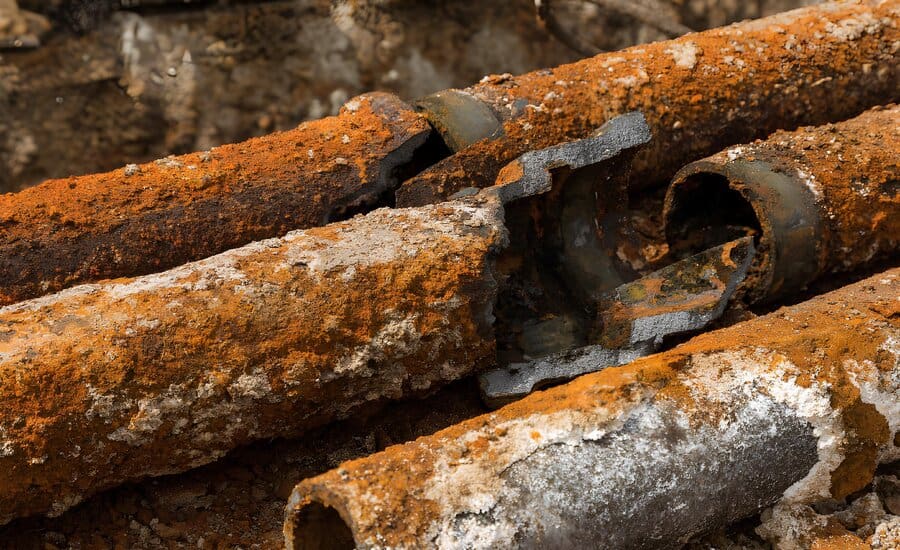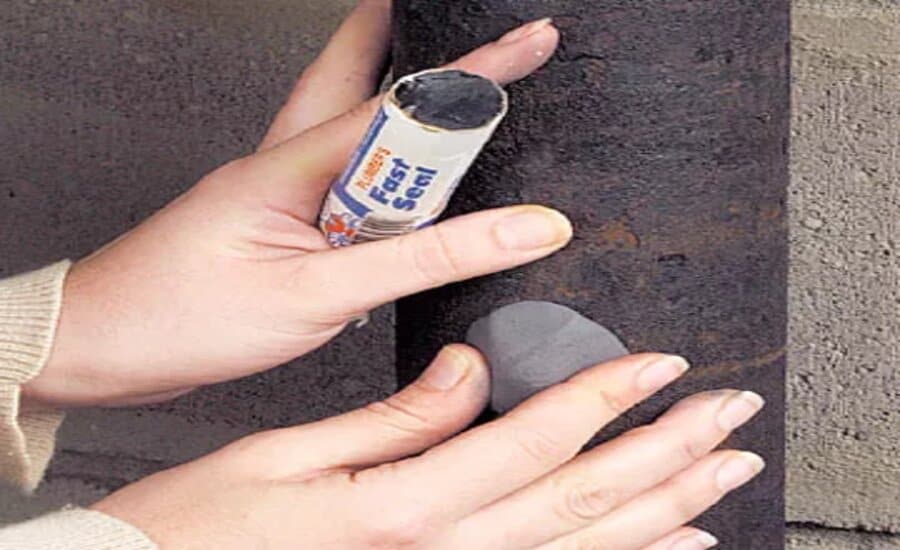Are you interested in learning how to repair cast-iron pipes? Is there still no other method you have revealed besides pulling up flooring, ruining driveways, and trenching sewers? Cast iron plumbing is preferred by builders due to its many benefits.
It includes water resistance, material durability, reliability, and resistance to damage. However, it also needs to be repaired for its proper functioning.
Learn the technical details of cast iron repair in this article. Initially, you acquire knowledge of signs of leakage. In the end, you will learn how to repair cast iron pipes.
How to Repair a Cast Iron Pipe
Plumbing construction has utilized cast iron pipes to carry water into residences. It has removed waste and sewage for the past century.
However, the average lifespan of cast iron pipes is between fifty and one hundred years. So, many older residences are grappling with pipe collapses, leaks, and fractures. It leads to extensive water damage, labor-intensive repairs, and expensive renovations.
Inspecting cast iron pipes in one’s house about once monthly for indications of rust, corrosion, or leakage is sensible. Inadequate inspection results in the unexpected disintegration of a cast iron pipe. Internal corrosion commonly causes it. In fact, over time, the inside of the pipe wears down until some spots are almost paper-thin.
You can do cast iron repair due to various types of damage in pipelines. This includes small holes, cracks, or substantial gaps. You can use epoxy or a combination of epoxy and leak-proof repair tape for cast iron plumbing repair.

Symptoms of Leaking or Damaged Cast Iron Pipes
Sometimes, pipes concealed behind walls, beneath floors, and ceilings only partially clear the damaged areas. Always conduct a monthly inspection of exposed sections of cast iron pipes for signs of damage including;
- foundation fissures
- leakage
- sewer odor
- blockages, Mold growth
- isolated patches of lawn growth.
Let’s explain each type of sign.
- Leaks

Figure 2. Cast iron pipe leaks
Detecting leaks in exposed sections of the cast iron conduit is simple. If there is damage on the floor or wall, you may notice signs of water damage or drywall. These signs might be apparent before you locate the actual source of the leak.
- Sewer odor
A sewer odor in a house shows a problem with the cast iron sewer. Examine the cast iron pipe where you detect the odor. It locates the damaged section of the pipe before the problem worsens.
Slow-draining basins, blocked shower drains, and toilet blockages are all potential signs of damaging cast iron plumbing pipes.
- Mold growth
Wet, dim environments are frequently favorable to mold growth. Cast iron pipes in dark areas, such as cellars, walls, ceilings, and floors, can cause mildew to grow. This can happen if the cast iron drain lines are leaking or damaged.
- Isolated areas of lush lawn growth
Isolated regions with abundant lawn growth Isolated patches of flourishing grass may indicate damaged or leaky cast iron pipelines. A hole in the pipe under the lawn can cause sewage to come out. This can make the soil more nutritious and cause some grass areas to grow too much.
- Cracks in the foundations
If there are cracks in the base of the house, there is likely a problem with the plumbing. Leaking pipes can harm the soil around a house and its foundation, causing problems with the walls, floors, and ceilings.
What You Require
Tools/Equipment
- Putty knife
- Wire bush
Require Material
- Grit cloth
- Rag
- Epoxy for cast iron repair
- Waterproof repair tape
- Paper towels
How To Repair Cast Iron Pipe: Steps
When you fix cast iron pipes, wearing a mask and gloves is recommended. This will help protect your airways and hands. Crucial to note that this precaution is necessary even though the task itself is not extremely dangerous. Wear long pants, shoes that cover your toes, and a shirt with long sleeves to safeguard your arms, legs, and feet during work.
- Identify the area of damage.
To begin, find the broken section of the pipe. Keep it hidden inside the house, like in the garden, walls, ceiling, or floor. It may be necessary to contact a professional plumber to prevent further damage.
You can fix small problems without a plumber if the broken or leaking area is on a visible pipe. Pressurize the pipe and cover the suspected spot with a paper towel to find a small leak. The occurrence of any wet spots on the paper towel will promptly become apparent. Providing precise location information for the pipe failure.
- Prepare the cast iron pipe.
Turn on the closest tap to drain water from the metal pipe if a water line goes to the house. Individuals must stop using sinks or flushing toilets during restoration if the complicated pipes are a wastewater line.
Using a wire brush and grit cloth, eliminate any surface corrosion. Once you locate the damaged section of the conduit, clean the cast iron material. Afterward, use a cloth to remove leftover dirt so the epoxy can stick to the pipe properly.
- Spread epoxy over the damaged area.
To acquire epoxy ready to use, read and follow the instructions provided by the manufacturer. Before using certain items, you have to mix them, but for others, they can just stick to the pipe.
Use a putty knife to put the epoxy in the damaged area once it has hardened. Don’t make the glue patch too thin, or it might leak. Remember that epoxy will dry and set in five to ten minutes, so don’t take too long to spread it out and cover everything.
- Apply waterproof tape to large holes.

To fix a hole in a cast iron pipe that is too large for cement, you must buy waterproof pipe repair tape or filler. Put epoxy on the broken area and the pipe patch tape around it. This will help make the outside of the pipe an ideal fit.
- Let the epoxy dry and set.
Of course, epoxy glue can take up to an hour to fully set, but it usually dries and hardens in five to ten minutes. Secure the waterproof tape for an hour to ensure it sticks well before running water through the cast iron pipes.
- Check for leaks.
Once you finish the cast iron pipe repair, turn on the faucet at the nearest sink to identify leaks. Check the susceptible areas for indications of leakage once the water is continuously flowing. Cover the pipe with a paper towel to identify further and see if water leaks from the patched area.
When to Call a Professional
It can be challenging to repair cast iron pipes. People often hide the broken parts inside the ceilings, walls, floors, or underground. It’s best to hire a plumber to prevent more harm instead of cutting holes and taking out parts of the house. The plumber can locate and repair the broken cast iron conduit.
In addition to years of practical experience and education, professional plumbers behold an extensive array of equipment and tools. They can find the problem, figure out what’s wrong, and develop a solution because they have the right skills and tools for the job. If the damage seems unfixable with a patch, they may recommend replacing the pipe, which can be expensive. If we can’t fix the old pipe, we must install a new one. Do you want to buy our cast iron valve, click here.